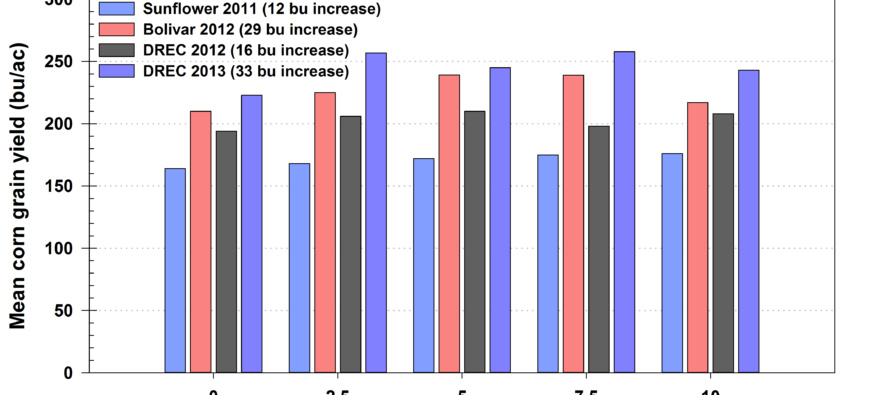Don’t Overlook Zinc in your Corn Fertility Program

I have been fielding calls from many producers and consultants within the last week about zinc applications with corn planting season shortly around the corner. Zinc deficiency in corn generally occurs early in the season (V2-V5) and manifests itself by producing a distinct interveinal chlorosis and/or white mid-leaf streaking in newly developed corn growth. In the Mid-South we tend to plant corn as early as we can which generally coincides with cool, wet soils due to our early spring climate. Expression of Corn Zn deficiency is more prevalent in cold, wet soils. Because of our tendency to plant early, producers need to closely examine their soil tests to determine if their corn crop may be prone to experience Zn deficiency. Our research in the Mississippi Delta suggests that corn Zn deficiencies may occur when soil test Zn is below 3.0 ppm and soil pH is above 6.8. In general, the greater the soil pH and the lower the soil test Zn, the greater the probability of corn yield reduction from a lack of Zn will occur.
Many questions I have been receiving have been about zinc application strategy. The strategy may differ from one producer to another based on the situation. The best method to build up low soil test Zn is with a granular product applied with an application of P and K to save on application expense. Our research suggest that rates of 5 to 10 lb Zn/ac can successfully increase yields in marginal situations and help build soil test Zn. Over the last three years, depending
upon soil characteristics we have observed yield increases ranging from 12 to 33 bu/ac with this type of Zn program. This program is good for producers who want to build up their soil test Zn.
If you do not want to build soil test Zn or are on rented ground that you may not have in subsequent years, in furrow or foliar applications are an option to consider. We have had very good results with in furrow applications alone or in combination with a foliar application. In most instances 1 to 1.5 lb actual Zn will maintain or increase corn yield in potential Zn deficient situations. The standard program I have been recommending is application of 0.5 to 1.0 lb Zn in furrow, followed by careful scouting and addressing subsequent needs around the V3-V4 growth stage of corn. This split application has been very consistent for us in Mississippi.






Let me tell You a sad story ! There are no comments yet, but You can be first one to comment this article.
Write a comment